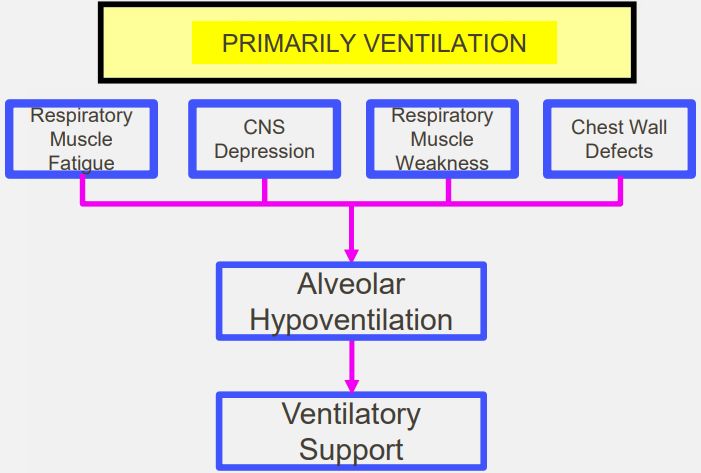PULMONARY PHYSIOLOGY-HYPOVENTILATION CAUSES
SUMMARY
1. Airway obstruction: can be proximal as in laryngeal edema or foreign body inhalation, or distal as in bronchial asthma or chronic obstructive pulmonary disease (COPD).
2. Impaired respiratory drive: as in cases of deep sedation or coma.
3. Restricted movement of the chest wall: as in obesity hypoventilation syndrome, circumferential burns, massive ascites, or ankylosing spondylitis.
4. Neuromuscular diseases: such as myasthenia gravis, muscular dystrophy, amyotrophic lateral sclerosis, high spinal injuries, polio, drugs or phrenic nerve injuries.

Reference(s)
Wilkinson, I. (2017). Oxford handbook of clinical medicine. Oxford: Oxford University Press.
Hannaman, R. A., Bullock, L., Hatchell, C. A., & Yoffe, M. (2016). Internal medicine review core curriculum, 2017-2018. CO Springs, CO: MedStudy.
Therapeutic Guidelines. Melbourne: Therapeutic Guidelines Limited. https://www.tg.org.au [Accessed 2021].